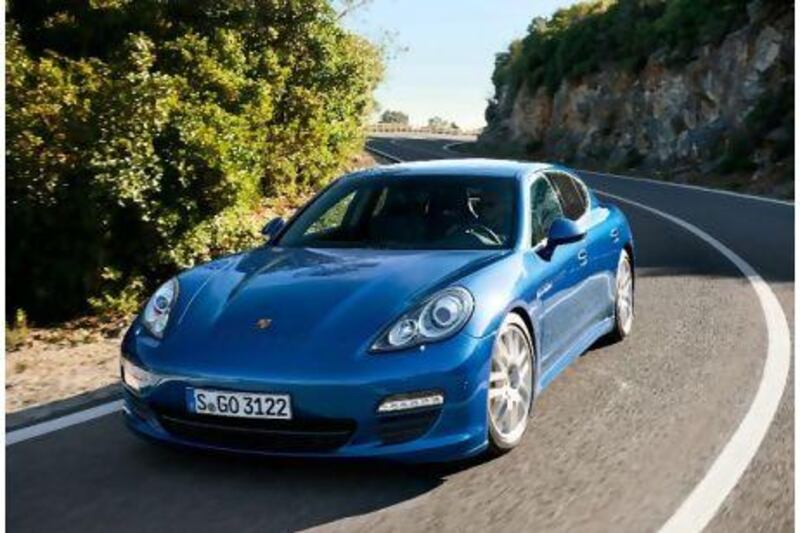Hangar 7 at Salzburg airport is much more eye-widening and pulse quickening than the fizzy energy drink that paid for it. It's the personal toy box of Red Bull billionaire Dietrich Mateschitz and it is a vast, beautiful glass building housing some truly incredible machinery. The name gives a clue as to its contents; the large collection of planes on display is interspersed by countless Formula One cars resplendent in the energy drink company's immediately recognisable charging bull livery.
Those F1 cars look comically small and fragile alongside the countless war-birds that tower over them, their downforce-producing carbon-fibre winglets sitting incongruously under shadows cast by vast wings designed to lift rather than press down. There's more horsepower here than could be easily counted. A vast cutaway 16-cylinder rotary piston aero engine sitting alongside David Coulthard's Red Bull race car is a magnificent display of the wonder of the internal combustion engine.
It's enough to distract from the task at hand. Porsche has brought us here not to gaze longingly at Mateschitz's fine collection of planes, helicopters and F1 cars, but to drive its new Panamera. The recently announced Turbo S might be a fitting choice, but today is actually all about the new Panamera S Hybrid.
It seems wrong listening to talk of economy in this edifice of raw power and conspicuous energy consumption. Hangar 7's collection of piston and jet-engined planes - not to mention the F1 cars - must use their fair share of the planet's dwindling oil resources. But fuel economy is what Porsche is talking about; with good reason, as the new Panamera S Hybrid boasts the lowest consumption of any car in the Porsche range.
The numbers say it'll achieve 6.8L/100km, though that does come with a proviso: to achieve that the Panamera S Hybrid needs to be specified with low rolling resistance tyres. Neglect to do so and you'll add 0.3 L/100km to that, for a combined consumption figure of 7.1 L/100km. That's still hugely impressive. It's achievable, too, apparently, with Porsche challenging the attendees at the Panamera S Hybrid's launch to beat it - one driver managed 6.2 L/100km.
Life's too short for feathering the accelerator and seeking out lorries to draught behind on the Austrian autobahns. There are some mountains nearby and the promise of some good roads. Around Salzburg though is where the S Hybrid really demonstrates the benefits of its clever parallel hybrid drive. It'll run on electricity alone at speeds of up to 85kph meaning silent battery-powered driving is easily possible in the hustle and bustle of town traffic. Push past that speed, or ask more than the battery can deliver, and the 3L supercharged V6 engine comes into play to help things along.
Combined output of the pair is 380hp, with the petrol V6 providing the biggest slice of that with its 333hp contribution. While the petrol engine over-delivers on the power front, the electric motor more than compensates with torque, its massive 300Nm from zero-to-1,150rpm helping the Panamera S Hybrid deliver a thumping 580Nm from just 1,000rpm when combined with the supercharged V6's twisting force. That translates to a zero-to-100kph time of just 6.0 seconds - or 0.6 seconds longer than the 395hp V8 Panamera S (which isn't hauling 180kg of batteries and cabling around with it).
That weight gain might sound considerable, but Porsche manages to spin it into an advantage. The batteries are slung out underneath the boot floor behind the rear axle. The result is the best axle load distribution of any Panamera, with the weight split 51 per cent to the front and 49 per cent to the rear.
It drives well, too, with the hybrid powertrain somehow managing to juggle eight gears, an electric motor and the constant starting and stopping of the V6, all while keeping the battery topped up. It's incredibly smooth when doing so, allowing near silent running while "sailing" on electricity alone maintaining speeds of up to 165kph on the autobahn. That smoothness is a surprise given how closely the Panamera S Hybrid's drivetrain is related to the rather clumsy set-up in the Cayenne. Inconsistent, and not hugely confidence inspiring, brakes aside, the Panamera S Hybrid drives very much like one of its conventional single-engined relatives.
That's praise indeed, and certainly there's a lot to be impressed with. Porsche's new hybrid is enjoyable to drive, even if the V6's engine note sounds strangled compared with its V8 brethren. The economy benefits are tangible, too, though it's unlikely in real world driving you'll ever really get close to that official combined consumption figure.
What's puzzling though is who exactly it's designed for. European buyers with a penchant for fuel sipping will be offered a diesel soon, and in the United States and the Middle East - where fuel's aplenty and inexpensive - the advantages are genuinely difficult to fathom. It's unlikely anyone will ever stand agog, with their pulse quickening at the sight of a box of batteries and some heavy cables in an aircraft hangar either, regardless of how technically impressive or how many energy drinks they've consumed.
The specs
Engine 3.0L supercharged V6 + full parallel hybrid motor
Gearbox eight-speed automatic
Power 380hp @ 5,500 rpm (system)
Torque 580Nm @ 1,000 rpm (system)
Fuel economy, combined 7.1 (6.8 with optional tyres) L/100km











